Commodore Amiga OCS/ECS
games list! |
| Total reviews! |
Handheld: 57 16/32bit Computers: 830 8bit Computers: 416 8bit Consoles: 58 16bit Consoles: 78 32/64bit Consoles: 107 128bit Consoles: 28 |
| OnLine members |
| Currently: 16 |
 |
| Best on 8bit micro! |
International Karate + - Commodore64 Xyphoes Fantasy - AmstradCPC Arkanoid II - AmstradCPC Pang - AmstradCPCPlus Wrath of the Demon - Commodore64 Night Hunter - AmstradCPC Barbarian - AmstradCPC Prince of Persia - SamCoupe Lemmings - SamCoupe |
| Best on 16bit micro! |
Turrican II - Amiga Shadow of the Beast - Amiga Jim Power - Amiga Agony - Amiga Turrican 2 - AtariST Project X - Amiga Super Frog - Amiga Flashback - Amiga Dark Seed - Amiga Flashback - Archimedes Warlocks - Archimedes Cannon Fodder - Amiga Turrican II - PC Universe - Amiga Hurrican - PC Tyrian - PC Super Stardust - AmigaAGA Pac-Mania - X68000 |
| Best on 8bit consoles! |
Pac-Mania - MasterSystem The NewZealand Story - MasterSystem Pang - GX4000 Batman Return of The Joker - nes Battletoads & Double Dragon - nes |
| Best on 16bit consoles! |
Jim Power - snes Donkey Kong Country - snes Aladdin - snes Comix Zone - Megadrive Alien Soldier - Megadrive Blazing Lazers - pcengine Raiden - pcengine Super Star Soldier - pcengine |
| Best on 32bit consoles! |
G-Darius - psone Super Mario 64 - n64 ISS Pro Evolution - psone Perfect Dark - n64 Dino Crisis 2 - psone Resident Evil 2 - psone Metal Gear Solid - psone Oddworld: Abe - psone Klonoa: Door To Phantomile - psone Medievil - psone Nights Into Dreams - Saturn Flashback - CDi |
| Total hits! |
| Puzzle! |
 |
| Random Old Ads! |
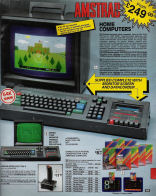 |
| ||||||||||||||||||||||||||
| ||||||||||||||||||||||||||
| ||||||||||||||||||||||||||
 STORY / GAMEPLAY STORY / GAMEPLAY Sir Fred was a noble medieval Knight until an evil dwarf called Ultimor put a spell and transformed him into a tiny gnome. Fred wants to spot Ultimor and gain back his human nature! He also must save his beloved Princess (how original!) He fights through hostile environments like forests, swarmed by deadly dwarfs, spiders, bats, demons and zombies, with his sword and his throwing knives as his only weapons. Sir Fred can move from left-to-right and from right-to-left, while he can also move on the foreground and the background of the screen as well. In order to progress further, Fred must discover and gather the appropriate key, which is usually guarded by armed dwarfs. Once he gets the key, he can go through the exit of each level! The technique of moving the game's character on the foreground and the background is a unique feature of its time (as far as I remember, only Activision's Predator uses a similar feature). But to be honest, this uniqueness makes the game a bit more tricky. Overall, Sir Fred is among the most impressive action adventures for the 16bit home computers and also one of the toughest to play. GRAPHICS / SOUND The Amiga version offers great visuals (though they are mostly dark), original characters and smooth sprite animation. The sprites move a bit smoother (as expected) on the Amiga version compared to its rival, the ST. The game starts with a very nice introductory medieval-style tune, along with a brief and funny animated scene where Sir Fred turns…tiny! The Amiga version offers a variety of in-game digitized sound effects (sword clangs, enemy cries and more) along with a great in-game music (which is missing on the ST version). | ||||||||||||||||||||||||||
 |
| ||
| ||||
| ||||
| ||
| |||||
|
| ||||
| ||
Amiga 500/500+
| ||
| read more... | ||
| The Amiga 500/500+ (default) color palette | ||
 | ||
| 12bit RGB 4096-colors palette (32 to 4096 colors on screen) | ||
| ||
| No comments added yet | ||
| Login to leave your message! |
| Our featured games |
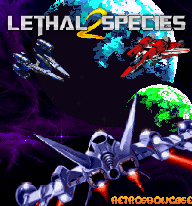 |
| Play old-school now! |
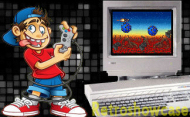 |
| Music Player! |
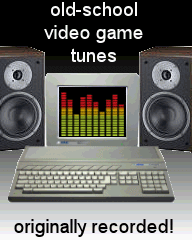 |
| Play ZX on-line!! |
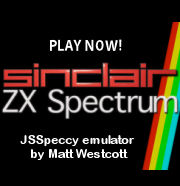 |
| Play CPC on-line!! |
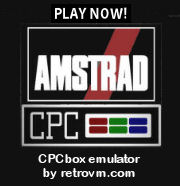 |
| Boot Screens! |
 |
| Retro-games Trivia! |
 |
| Old-school Crossword! |
 |
| Is this my palette? |
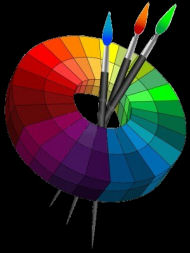 |
| The logo evolution! |
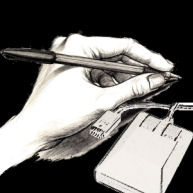 |
| Manuals! |
 |
| Beat them All! |
 |




 8.0
8.0











 CPU: Motorola MC68000 7.16 MHz
CPU: Motorola MC68000 7.16 MHz